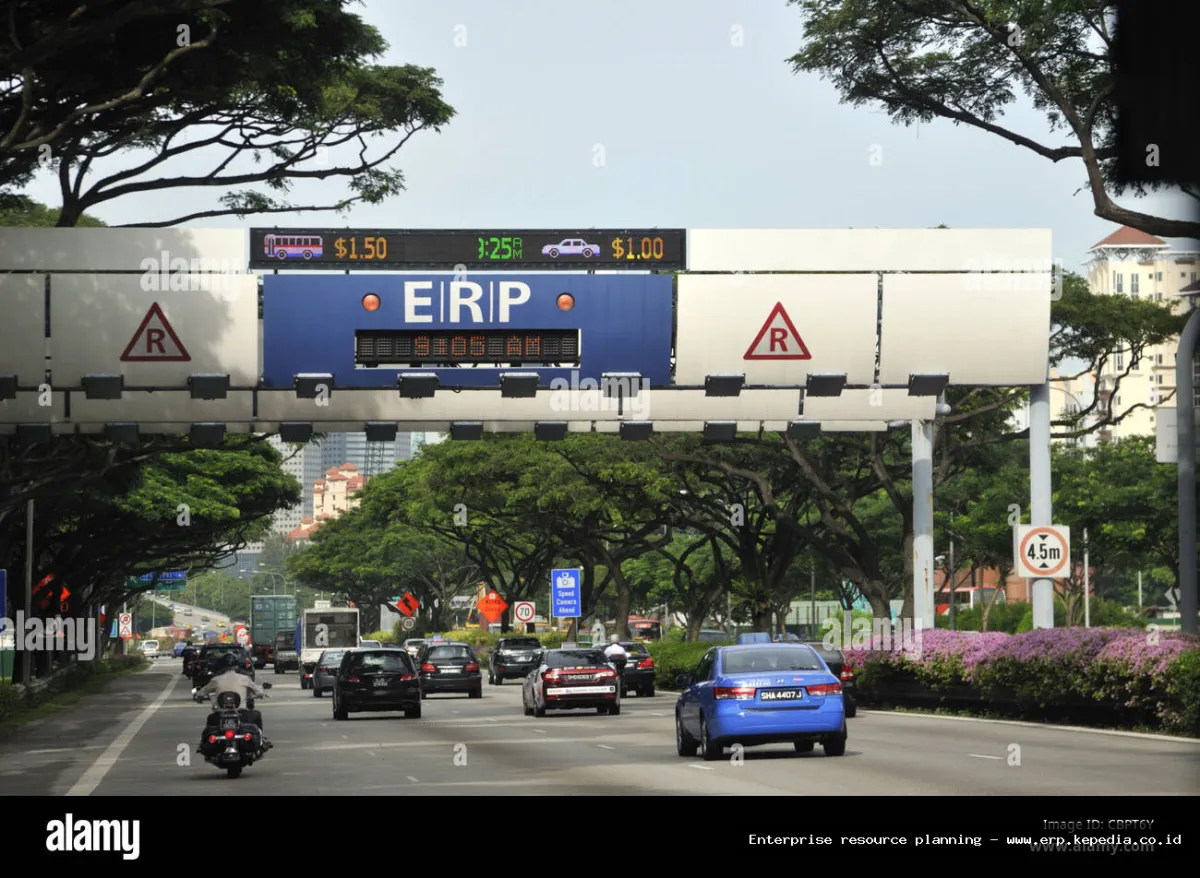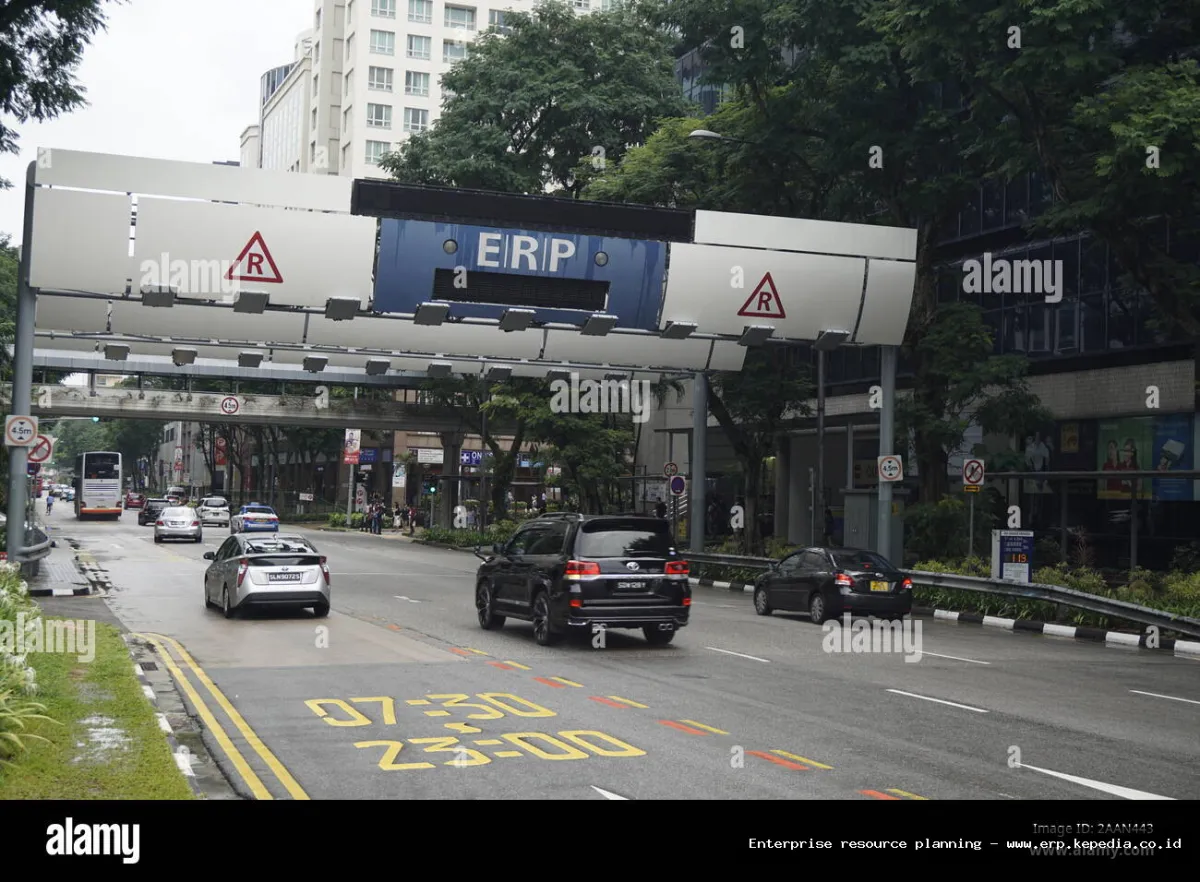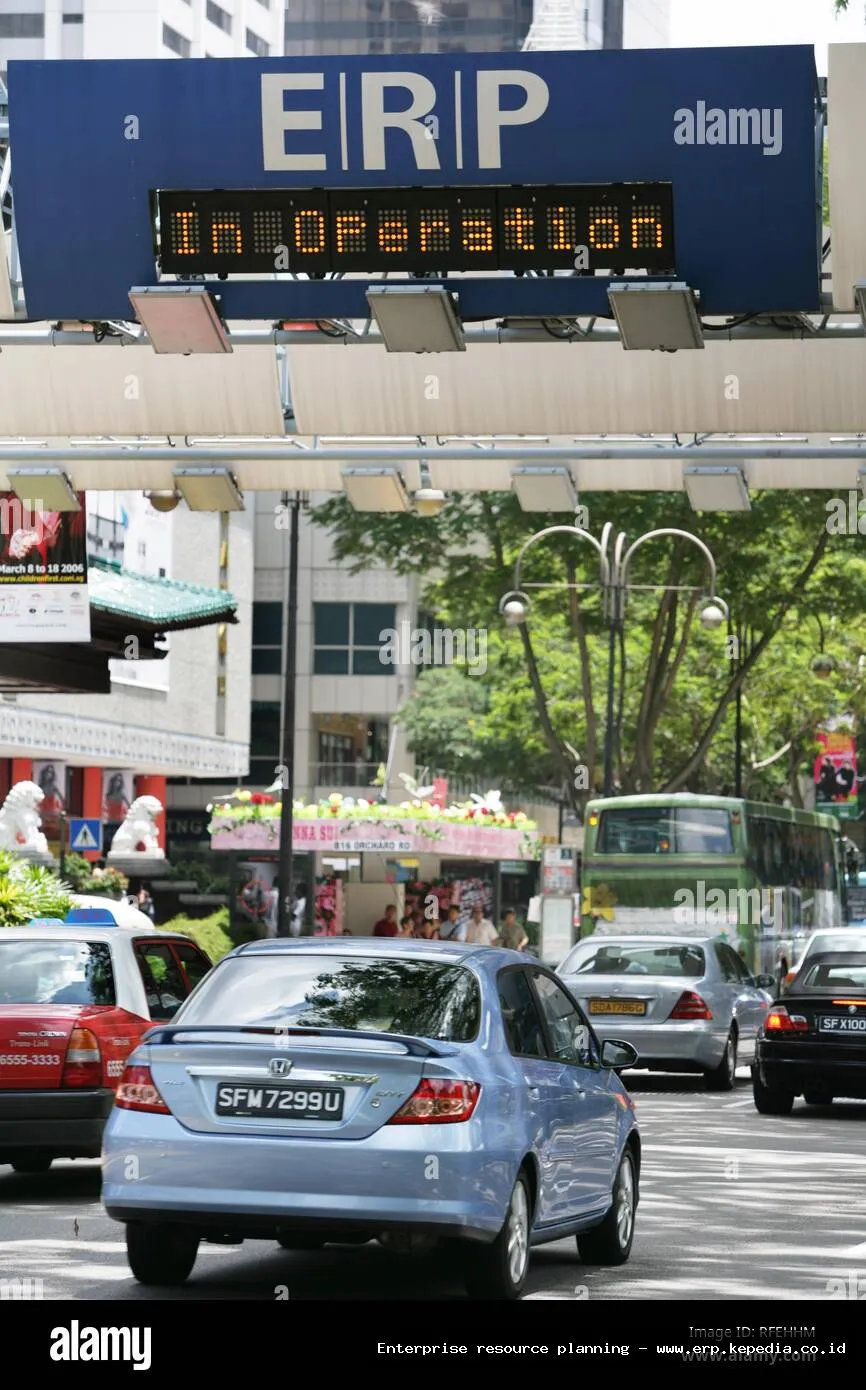ERP Road Pricing Singapore: Complete Guide, Features and Details
ERP Road Pricing Singapore: Complete Guide, Features and Details
Singapore, a small island nation with a bustling economy, faces significant challenges in managing traffic congestion. To combat this, the government implemented the Electronic Road Pricing (ERP) system. This isn’t your typical toll booth; it’s a sophisticated, real-time congestion pricing mechanism that dynamically adjusts prices based on traffic conditions. Think of it as a constantly evolving supply and demand curve applied to road usage. The aim is simple: to encourage drivers to consider alternative routes, travel times, or even public transportation, ultimately reducing congestion and improving traffic flow across the island.
Understanding ERP is crucial for anyone living in or visiting Singapore, as it directly impacts transportation costs. Beyond the basic functionality of charging drivers, the system is underpinned by complex technology and data analysis that allows for adaptive pricing. Furthermore, the revenue generated from ERP is reinvested into improving Singapore’s overall transportation infrastructure, creating a positive feedback loop that benefits all road users. This article aims to provide a comprehensive guide to ERP, covering its history, functionality, pricing structure, and future developments.

From the perspective of someone who has spent years navigating Singapore’s roads and witnessed the evolution of the ERP system, it’s clear that it’s more than just a toll. It’s a carefully designed system intended to shape behavior and manage a limited resource effectively. While sometimes perceived as a burden by drivers, its impact on reducing congestion is undeniable. This guide will delve into the intricacies of ERP, offering insights into how it works, how it affects you, and what the future holds for this innovative road pricing system.
What is ERP (Electronic Road Pricing)?
Electronic Road Pricing (ERP) is a congestion pricing system implemented in Singapore to manage traffic flow and reduce congestion during peak hours. It works by charging motorists a fee for using certain roads during specific times. The system is designed to encourage drivers to avoid congested areas or travel at off-peak hours, thereby distributing traffic more evenly across the road network.
Key Features of ERP
The ERP system has several key features that contribute to its effectiveness:
- Electronic Payment: ERP uses a contactless payment system. Vehicles are equipped with an In-vehicle Unit (IU), which is a device that automatically deducts the ERP charges when the vehicle passes under an ERP gantry.
- Dynamic Pricing: ERP rates are not fixed. They are dynamically adjusted based on real-time traffic conditions. This means that the price of using a particular road can change depending on the level of congestion.
- Gantry System: ERP gantries are strategically located at various points on roads and expressways. These gantries are equipped with sensors and cameras that detect vehicles passing through and deduct the appropriate ERP charges.
- Enforcement: The ERP system is strictly enforced. Vehicles that pass under ERP gantries without a valid IU or sufficient funds in their stored-value card are subject to fines.
History of ERP in Singapore
Singapore’s journey towards congestion pricing began long before the introduction of electronic systems. The initial steps involved Area Licensing Scheme (ALS) in 1975, which required vehicles entering the city center during peak hours to display a special license. This system, while effective, was labor-intensive and prone to enforcement challenges.
Evolution from ALS to ERP
The ALS was eventually replaced by the Road Pricing Scheme (RPS) in 1995, which used electronic tags and readers. This was a significant step forward in automating the process. However, the RPS still required vehicles to slow down as they passed through the gantries, creating minor congestion points.
The Introduction of ERP
In 1998, Singapore launched the Electronic Road Pricing (ERP) system, which further refined the process. ERP eliminated the need for vehicles to slow down, as the charges are automatically deducted as they pass under the gantries. This system has been continuously upgraded and refined over the years to improve its accuracy and effectiveness.
How ERP Works
The ERP system relies on a combination of technology and infrastructure to function effectively. Here’s a breakdown of the key components and processes involved:
In-vehicle Unit (IU)
The IU is a small electronic device that is installed in every vehicle. It serves as the interface between the vehicle and the ERP system. The IU contains a stored-value card (typically a NETS FlashPay card or EZ-Link card) that is used to pay the ERP charges.
ERP Gantries
ERP gantries are structures that are positioned over roads and expressways. These gantries are equipped with sensors that detect vehicles passing underneath. The sensors communicate with the IU in the vehicle to deduct the appropriate ERP charge.
Payment Process
When a vehicle passes under an ERP gantry, the following steps occur:
- The gantry’s sensors detect the vehicle and identify its IU.
- The gantry’s system determines the ERP charge for that particular road and time.
- The ERP charge is automatically deducted from the stored-value card in the IU.
- The IU displays the amount deducted.
Enforcement Mechanisms
To ensure compliance, the ERP system includes several enforcement mechanisms:
- Cameras: ERP gantries are equipped with cameras that capture images of vehicles passing through. These images are used to identify vehicles that do not have a valid IU or sufficient funds in their stored-value card.
- Fines: Vehicles that violate ERP regulations are subject to fines. The amount of the fine depends on the nature of the violation.
- Automated System: The entire enforcement process is automated, minimizing the need for manual intervention.
ERP Pricing Structure
Understanding the ERP pricing structure is essential for managing your transportation costs in Singapore. The pricing is dynamic and varies based on several factors.
Factors Affecting ERP Pricing
The following factors influence ERP pricing:
- Time of Day: ERP charges are typically higher during peak hours (e.g., morning and evening rush hours) and lower during off-peak hours.
- Location: ERP charges vary depending on the location of the gantry. Roads and expressways that experience higher levels of congestion typically have higher ERP charges.
- Vehicle Type: Different vehicle types (e.g., cars, motorcycles, buses, lorries) may be subject to different ERP charges.
- Day of the Week: ERP charges may vary depending on the day of the week. For example, ERP charges may be lower on weekends and public holidays.
How ERP Rates are Determined
The Land Transport Authority (LTA) monitors traffic conditions and adjusts ERP rates accordingly. The goal is to maintain optimal traffic flow on roads and expressways. LTA uses data from traffic sensors and cameras to assess congestion levels and determine the appropriate ERP charges. They aim to keep traffic speeds within a target range (e.g., 45-65 km/h on expressways).

. Streamlining operations often requires advanced solutions, such as Erp Toll System, to manage traffic flow efficiently
Checking ERP Rates
Motorists can check ERP rates using various resources:
- LTA Website: The LTA website provides up-to-date information on ERP rates for different roads and gantries.
- Mobile Apps: Several mobile apps provide real-time ERP rate information.
- On-road Signage: Some roads are equipped with electronic signs that display the current ERP rates.
Impact of ERP on Traffic Congestion
The primary goal of ERP is to reduce traffic congestion. Studies have shown that ERP has been effective in achieving this goal.
Effectiveness in Reducing Congestion
ERP has been credited with reducing traffic volume on roads and expressways during peak hours. By charging motorists a fee for using congested roads, ERP encourages them to consider alternative routes, travel times, or modes of transportation. This helps to distribute traffic more evenly and reduce congestion.
Benefits of Reduced Congestion
Reduced congestion has several benefits:
- Improved Travel Times: Shorter travel times for motorists.
- Reduced Fuel Consumption: Less time spent idling in traffic, resulting in lower fuel consumption.
- Lower Emissions: Reduced emissions from vehicles, contributing to a cleaner environment.
- Increased Productivity: Increased productivity for businesses and individuals due to shorter travel times.
Future Developments in ERP
Singapore is continuously exploring ways to improve the ERP system. Future developments are focused on enhancing its functionality and making it more efficient.
Next-Generation ERP System
The next-generation ERP system, known as ERP 2.0, will use Global Navigation Satellite System (GNSS) technology instead of physical gantries. This will allow for more flexible and precise pricing, as charges can be based on distance traveled and real-time traffic conditions.
Benefits of ERP 2.0
ERP 2.0 offers several potential benefits:
- More Precise Pricing: Charges can be based on distance traveled and real-time traffic conditions, leading to more equitable pricing.
- Reduced Infrastructure: The elimination of physical gantries will reduce infrastructure costs and improve aesthetics.
- Enhanced Data Collection: GNSS technology will enable more detailed data collection, which can be used to improve traffic management.
Concerns and Challenges
The implementation of ERP 2.0 also raises some concerns, such as privacy issues related to tracking vehicle movements. The government is addressing these concerns by implementing strict data protection measures.
Tips for Navigating ERP in Singapore
Here are some tips for navigating the ERP system in Singapore:
Planning Your Route
Plan your route in advance to avoid congested areas and high ERP charges. Use online maps and traffic apps to identify alternative routes and travel times.
Checking ERP Rates
Check ERP rates before you travel to understand the charges for your route and time of travel. Use the LTA website or mobile apps to get real-time ERP rate information. Managing these interconnected processes effectively often necessitates a comprehensive system, ERP playing a critical role in centralizing data and streamlining operations
.
Maintaining Sufficient Funds
Ensure that your stored-value card has sufficient funds to cover ERP charges. You can top up your card at various locations, such as convenience stores and ATMs.
Considering Alternative Transportation
Consider using alternative modes of transportation, such as public transport, cycling, or walking, especially during peak hours. This can help you avoid ERP charges and reduce congestion.
Conclusion
The ERP system in Singapore is a sophisticated and effective tool for managing traffic congestion. While it may seem complex, understanding its features and pricing structure can help you navigate the roads more efficiently and manage your transportation costs. As Singapore continues to evolve its transportation infrastructure, the ERP system will undoubtedly play a crucial role in ensuring smooth and sustainable traffic flow for years to come.

Conclusion
In conclusion, Singapore’s ERP road pricing system stands as a globally recognized, albeit constantly evolving, solution to urban congestion. This sophisticated system, leveraging technology and data analysis, has demonstrably influenced driver behavior, shifting traffic patterns and contributing to smoother commutes, especially during peak hours. While not without its challenges, particularly concerns around affordability and potential inequity, the ERP continues to be refined and adapted, incorporating feedback and technological advancements to better serve the needs of a growing and increasingly mobile population.
The success of the ERP hinges on continuous monitoring, evaluation, and a willingness to adapt to changing circumstances. Moving forward, a greater emphasis on transparency and public engagement will be crucial to maintain public trust and ensure the system remains equitable and effective. As Singapore explores future mobility solutions, understanding the lessons learned from the ERP, both its successes and its limitations, will be essential for shaping a more sustainable and efficient transportation landscape. Interested in learning more about the latest updates and future directions of Singapore’s transportation policies? We encourage you to visit the Land Transport Authority’s website at https://www.lta.gov.sg/.
Frequently Asked Questions (FAQ) about ERP road pricing Singapore
What is ERP road pricing Singapore?
ERP road pricing Singapore is a topic that many people search for information about. This article provides comprehensive and reliable information about ERP road pricing Singapore to help you understand it better.
Why is ERP road pricing Singapore important?
ERP road pricing Singapore has an important role because it can help you get the information you need. Understanding ERP road pricing Singapore will provide benefits and advantages for you.
How can I get more information about ERP road pricing Singapore?
For more information about ERP road pricing Singapore, you can read the complete article above or contact relevant official sources. We also recommend that you always update your information as details can change over time.